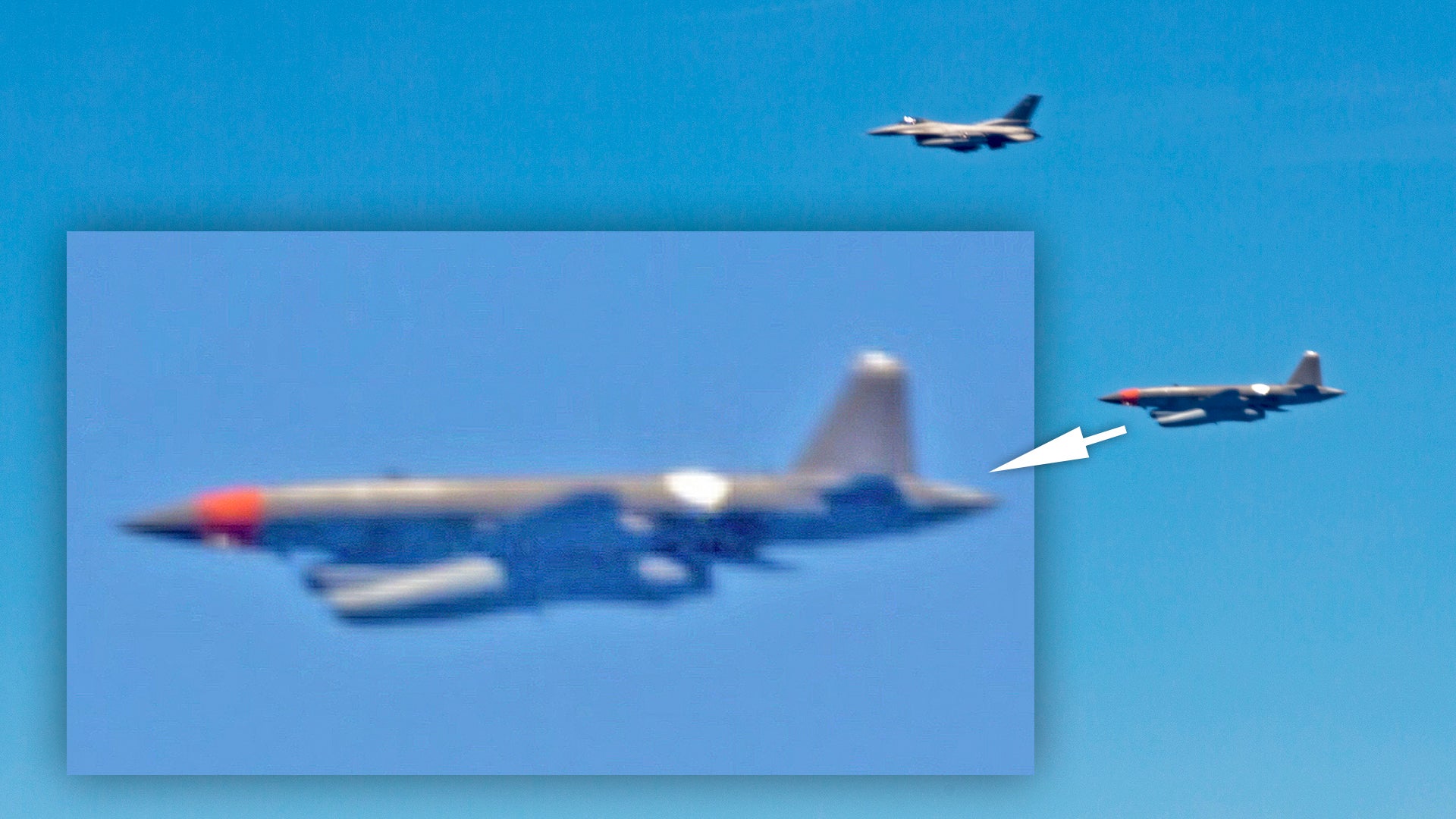An example of the Kratos UTAP-22 Mako unmanned aircraft, as used in the recent flight test of an artificial intelligence-driven “computer brain,” is now engaged on further flight trials for the Skyborg program, but with a radically reworked appearance suggesting it’s now carrying additional sensors, perhaps including an infrared search and track system. Accompanying photos of the revamped drone were released by the Pentagon, which announced that the flight in question “was the closest a manned fighter has flown to an unmanned aircraft under autonomous control in the history of the Department of Defense.”
Two photos posted recently to the Defense Visual Information Distribution Service website show the modified UTAP-22 being accompanied by an F-16C fighter jet assigned to the Air Force’s 96th Test Wing, which operates out of Eglin Air Force Base, Florida, and is the lead test entity for Skyborg. The milestone mission was conducted over the Gulf of Mexico, on May 5. The considerable over-water ranges in the Gulf of Mexico are already regularly used for missions involving ground-launched Kratos BQM-167A Skeeter target drones, upon which the UTAP-22 is based.
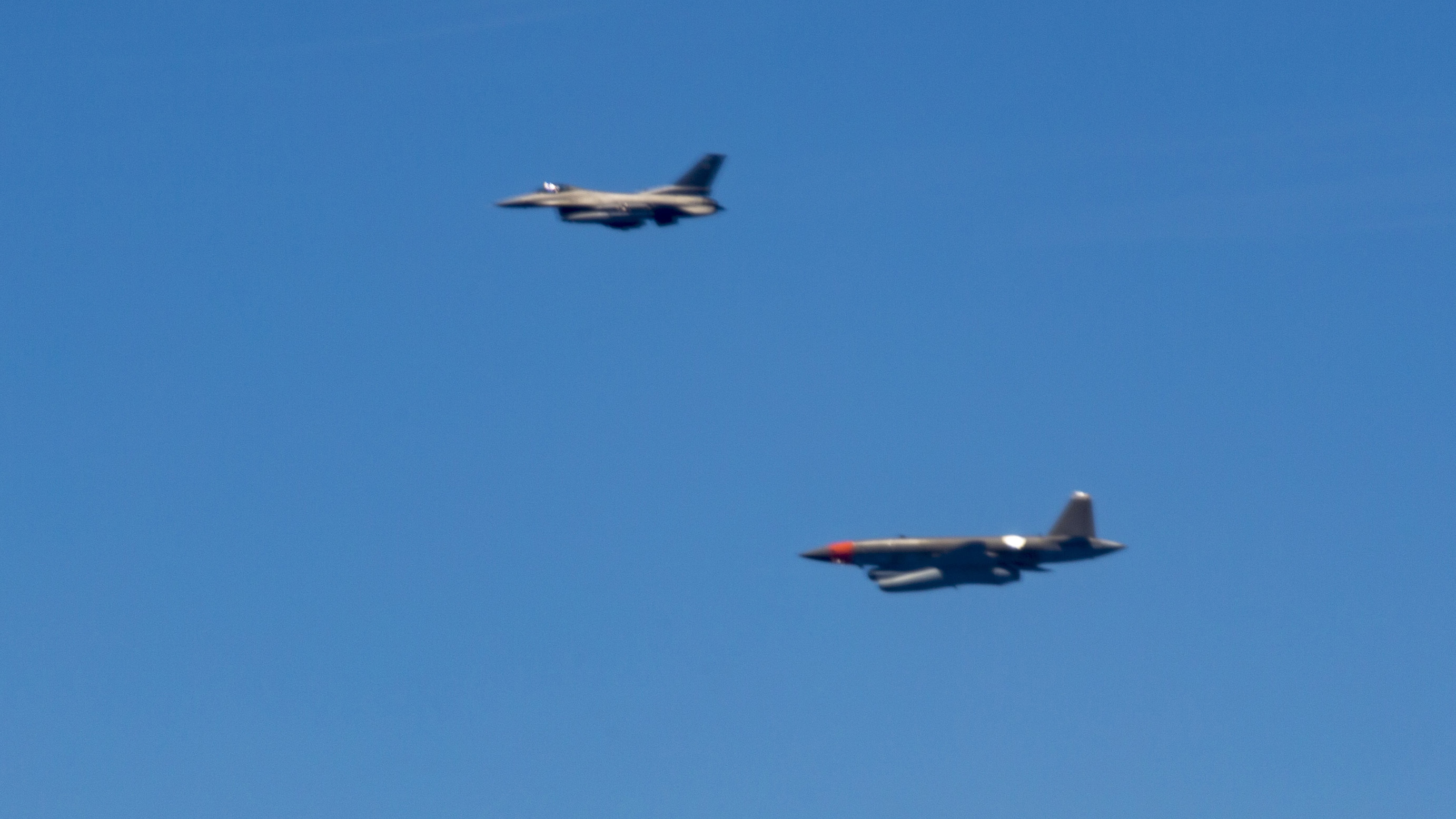
Compared to other examples of the UTAP-22 that we’ve seen before, the drone involved in the May 5 test appears to feature a significantly reshaped air intake for its underslung jet engine. Although the quality of the image is not ideal, it certainly appears that the intake has been made longer and deeper to accommodate a sensor above it. Based on the limited information that can be gathered from these images, the rear of the drone appears more or less unchanged.
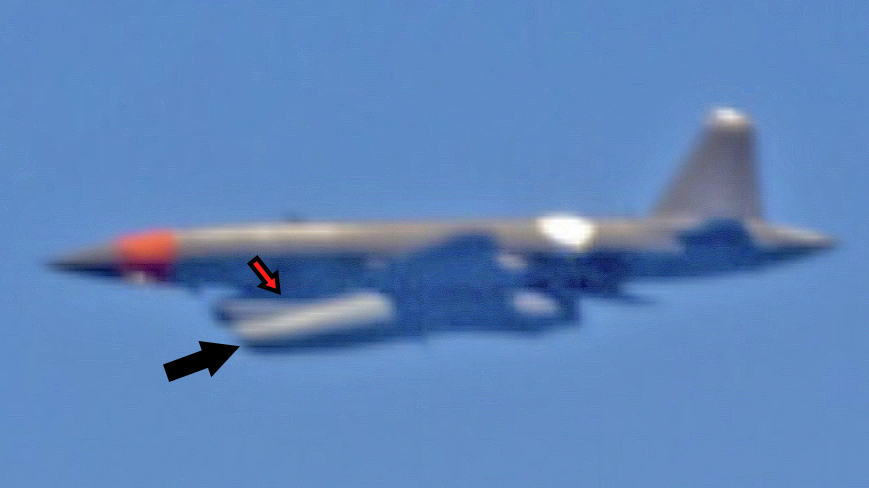
As for the new fairing that appears to project forward between the UTAP-22’s fuselage and the F-16-like intake, this certainly looks similar to infrared search and track (IRST) sensors of the type that are now increasingly being carried on U.S. fighters in pod-mounted form. Last year, we reported on how these pods were being tested on both Air Force F-15C and Navy F/A-18E/F fighter jets. Above all, these kinds of sensors provide the pilot with the ability to identify, track and target aircraft, including stealthy platforms that cannot be easily “seen” on radar. Porting this kind of technology onto an unmanned loyal wingman-type drone would make logical sense. Distributing these sensors on loyal wingmen or autonomous drones and networking and fusing their info via datalink can help increase the quality of opposing aircraft tracks they produce via triangulation.
An IRST sensor, unlike a radar, also has the advantage of operating passively, meaning a hostile aircraft wouldn’t necessarily be aware that it was being tracked or of a threat aircraft’s presence via its own radar emissions. If that sensor is carried by a stealthy, smaller platform, such as a UTAP-22, the chances of its being detected would be reduced still further. Indeed, it would be possible to envisage loyal wingmen drones using its IRST sensors to provide targeting to manned fighters whose own radar was being degraded by enemy jamming or by an otherwise deteriorated electromagnetic environment or not operating at all as to not give away the aircraft’s presence, relying on telemetry from the expendable drones instead.
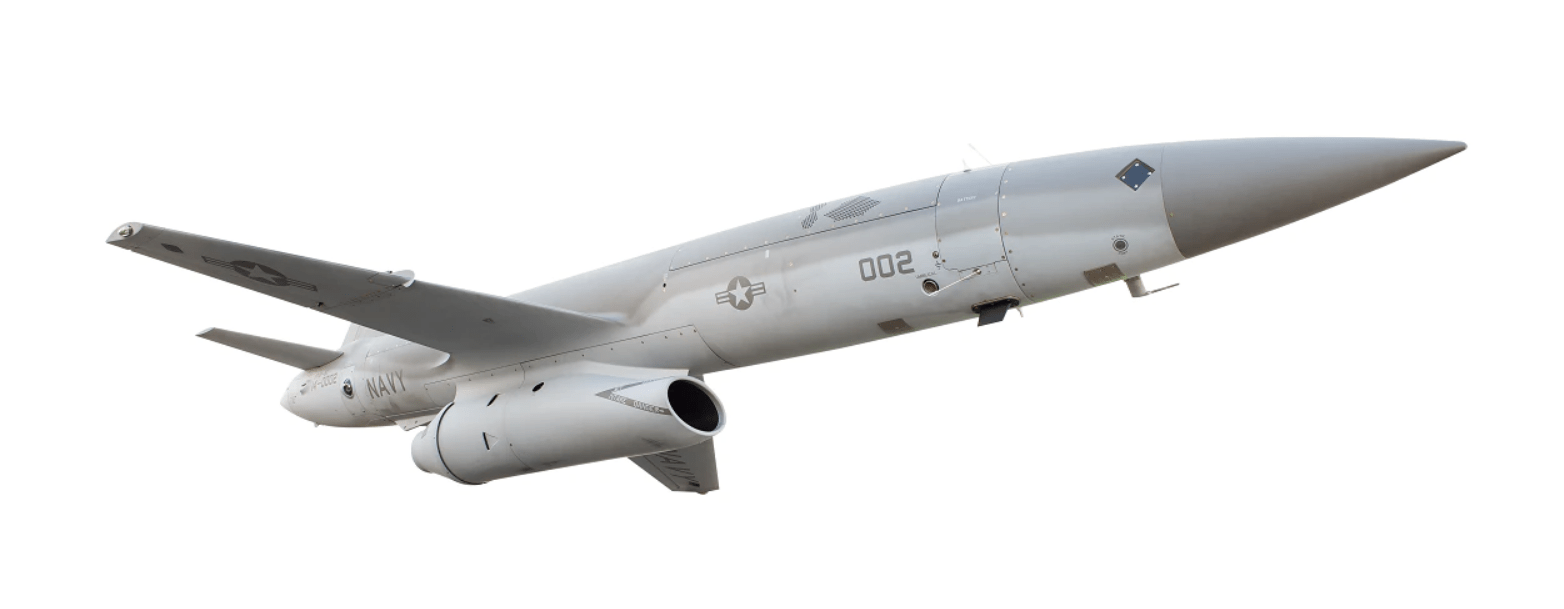
By extending the air inlet into more of a serpentine layout, it allows for another sensor to be mounted in a streamlined fashion on the centerline of the aircraft. This means that the nose could still carry another sensor, like a radar or electronic warfare package, simultaneously. In addition, the serpentine duct also may cut down significantly on the UTAP-22’s radar cross-section from the critical frontal hemisphere perspective.
According to the provided caption, the UTAP-22 “was modified to operate under its own computerized control as part of the Air Force Research Laboratory’s Autonomous Attritable Aircraft Experiment [AAAx].” That statement indicates the May 5 mission was a continuation of the test on April 29 in which a UTAP-22 carrying the Skyborg Autonomy Core System (ACS) from Tyndall Air Force Base in Florida, AAAx being the name for the Skyborg flight test campaign. It also follows recent tests of the UTAP-22 flown with the Air Force’s KC-135 Stratotanker, intended to pave the way for the veteran aerial refueling tanker to serve as a communications node and potentially to control its own loyal wingman drones.
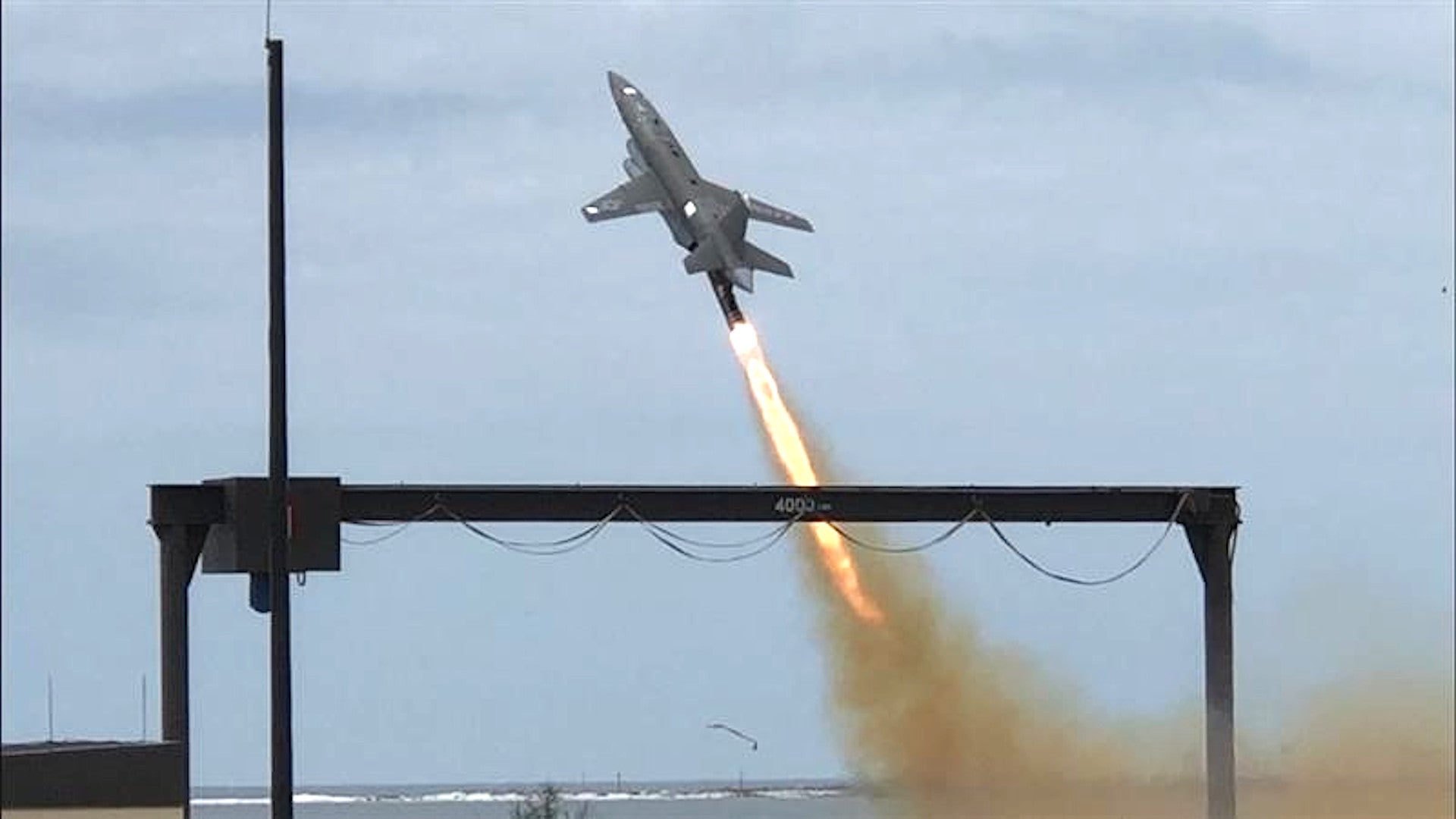

Aside from whatever modifications and/or sensors we can see here, the test continues to expands upon manned-unmanned proximity flight, with a new degree of proximity between the airframes involved. The UTAP-22 has been tested in the loyal wingman role since 2015, including flying together with a U.S. Marine Corps AV-8B attack jet that year. Also in 2015, Lockheed Martin, in cooperation with the CalSpan Corporation, demonstrated the ability of a two-seat Block 50 F-16D jet to safely fly in formation with a modified unmanned F-16 testbed, known as the Variable stability In-flight Simulator Test Aircraft, or VISTA, in a test known Have Raider.
In addition, we’ve seen other manned-unmanned formation flight milestones in the past few years or so, including a major test event late last year that demonstrated the ability of a specially configured XQ-58A Valkyrie drone to serve as a communications and data gateway between F-22 and F-35A stealth fighters. Last year also saw Boeing and the Navy use an EA-18G Growler electronic warfare aircraft to oversee two other EA-18Gs flying missions semi-autonomously. That test demonstrated technology that could allow the Growlers, as well as F/A-18E/F Super Hornets, to work closely together with unmanned aircraft in the future.
Skyborg aims to develop a “system of systems” that will be able to operate not only networked loyal wingman-type drones, which are intended to operate alongside and in support of manned fighters, but also fully autonomous unmanned combat air vehicles, or UCAVs. Kratos is one of the companies that are on contract to begin delivering new drones to support Skyborg, and Boeing and General Atomics are also involved.
Intriguingly, a concept art cutaway released as part of an earlier Skyborg video showed what appeared to be some kind of sensor, seemingly meant to depict an IRST system, in the nose of the drone.

Whether that is what we can see here on the UTAP-22 isn’t perfectly clear, but it is very likely. We also know that the Air Force has always focused heavily on Skyborg using open-architecture and modular systems to enable the rapid insertion of new functionality and capabilities as time goes on by parties that might not have even been involved in its original development.
Meanwhile, General Atomics has also begun flight tests of its stealthy Avenger unmanned aircraft carrying a Lockheed Martin Legion IRST pod under its wing. While we don’t yet know what drone General Atomics will be supplying under its Skyborg airframe contract, the company has publicly talked about using the Avenger as surrogates for Skyborg-related work in the past. On the other hand, it’s also unclear what prompted the flight test of the IRST pod on the Avenger in the first place and to what degree, if any, it was related to Skyborg.
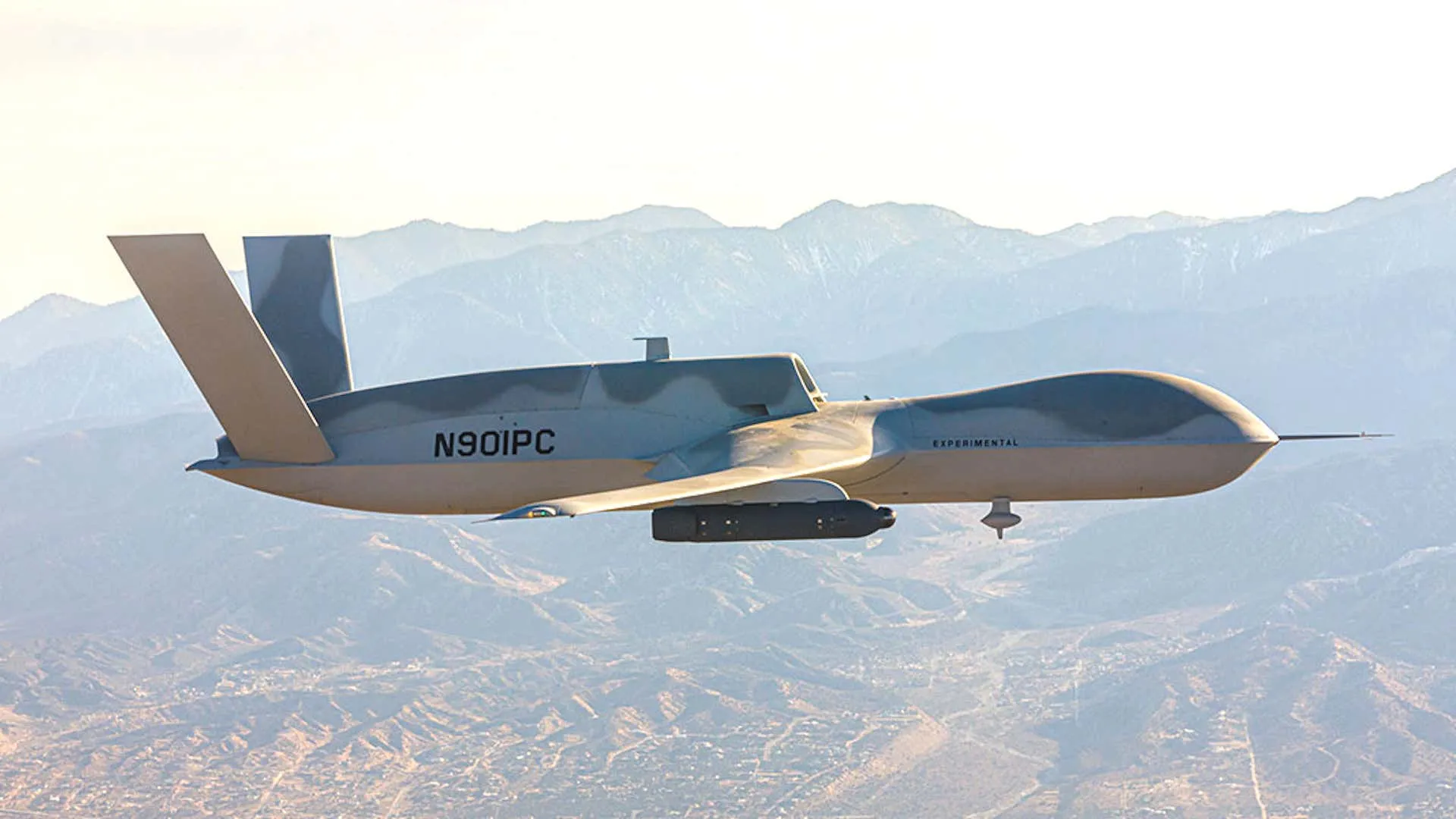
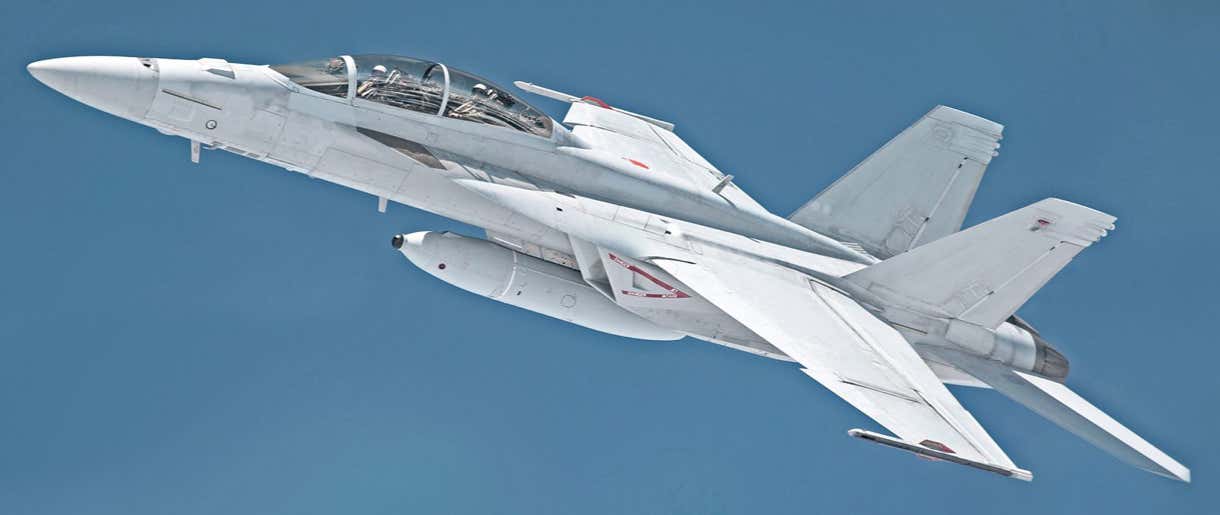
This is not the first time we have seen a specially adapted UTAP-22 drone. In the past, a differently adapted UTAP-22 appeared under the wing of an F-15C. That configuration included small wingtip pods that appeared to accommodate missile approach warning systems (MAWS) sensors that are used to provide threat awareness and countermeasure cueing on combat aircraft. There was also a large golden dome-like feature on top of the drone’s forward fuselage. At the time, there was speculation that this, too, could be a type of infrared sensor, since it had a striking resemblance to the Falcon Eyes sensor used on the United Arab Emirates Block 60 F-16E/F Desert Falcons.
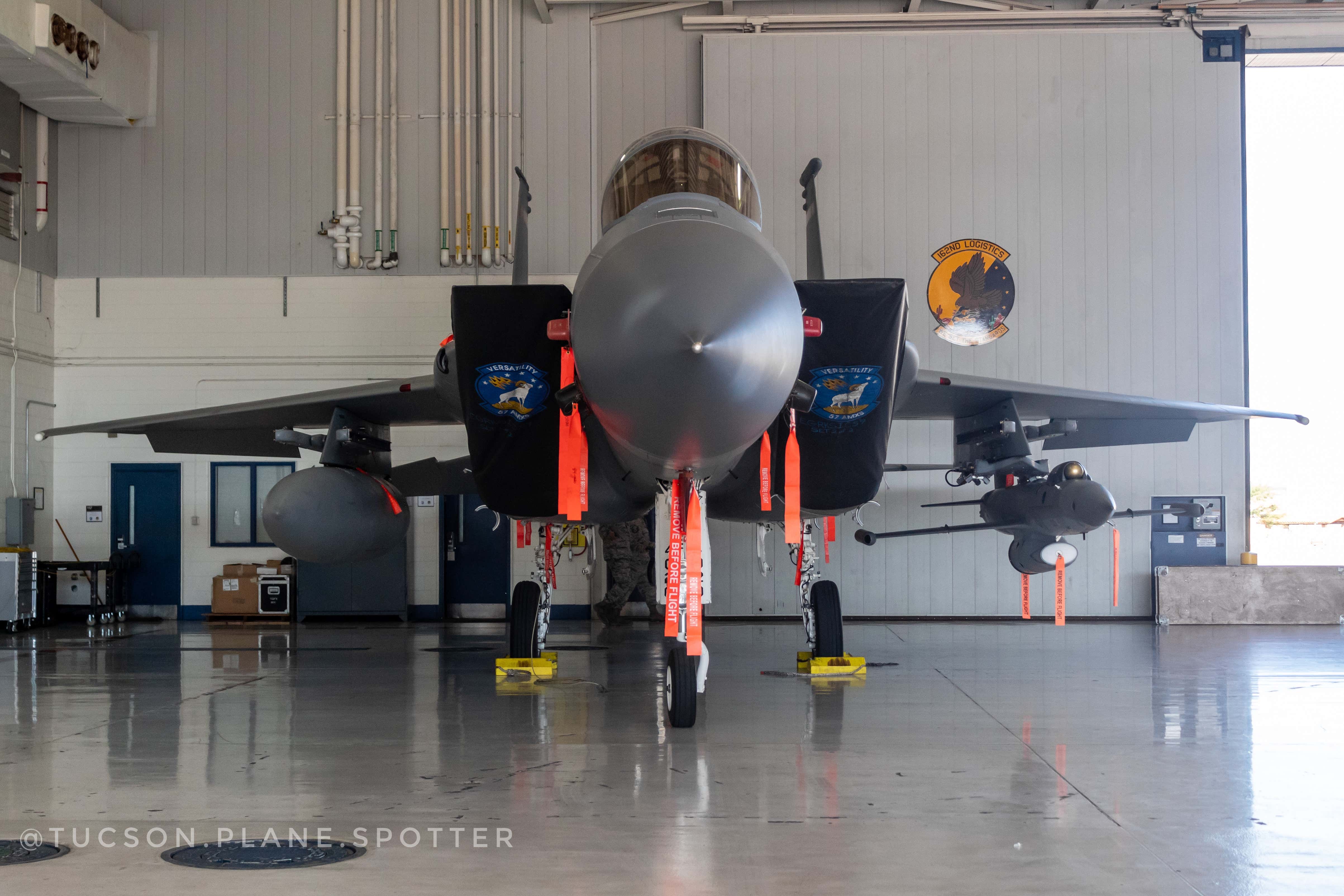
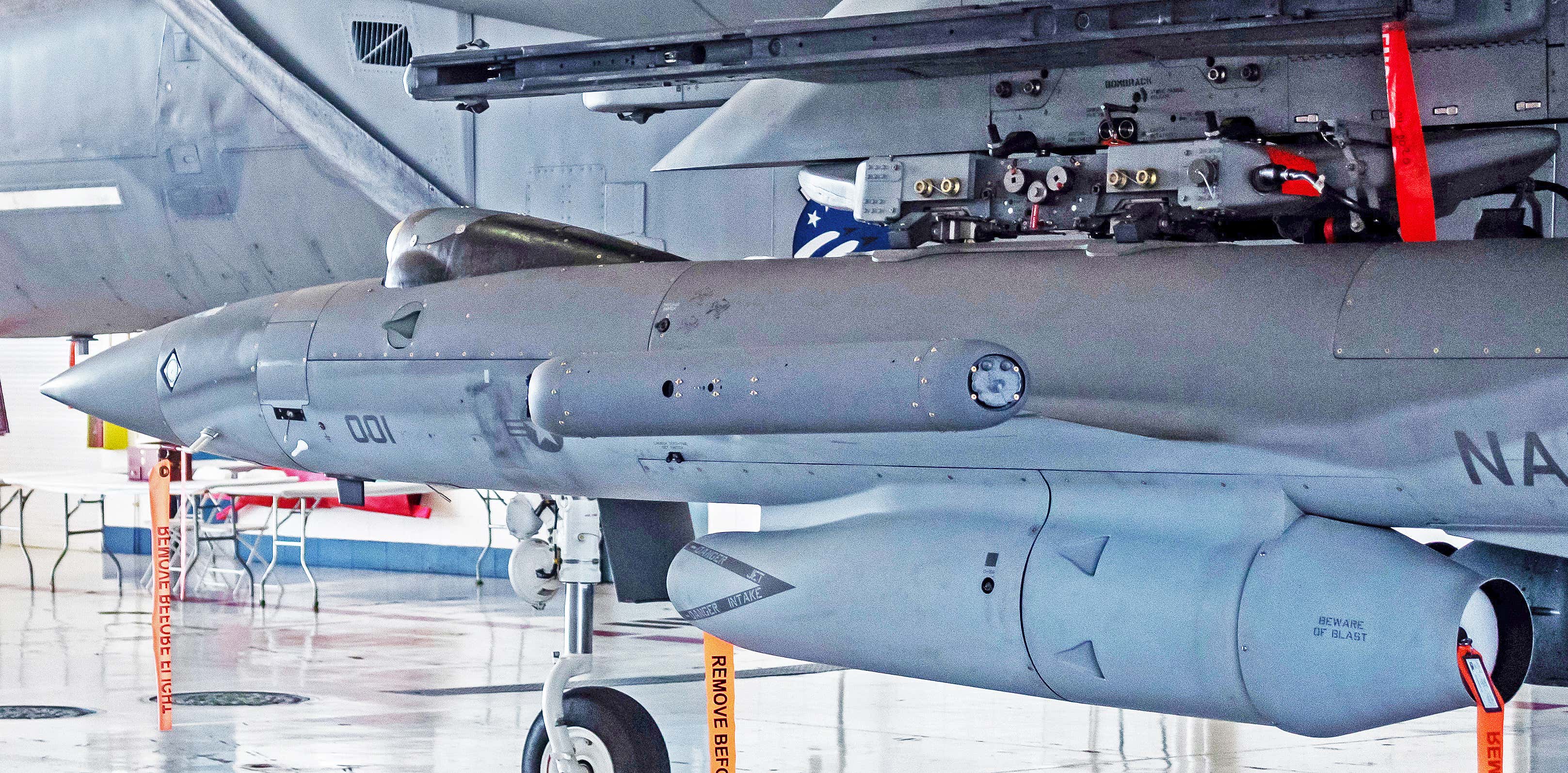
The U.S. military has years of work involving semi-autonomous and autonomous UCAVs working cooperatively, with each other, and with manned aircraft. As such, this manned-unmanned proximity flight builds upon plenty of past experience. Still, the concepts involved unmanned and unmanned aircraft flying — and fighting — together continue to be proven, at least publically. In fact, as The War Zone has examined in the past, it raises the question of why these kinds of capabilities, as far as is known, remain restricted to test environments.
The UTAP-22 has already shown that it’s a suitable platform to accommodate different configurations, including both internal and external modular payloads; it’s also notable that this is the first loyal wingman-type drone to be offered for sale to international customers. Whatever the UTAP-22 involved in these recent tests has been fitted with, it seems very unlikely that this will be the last iteration of the drone, in terms of the different kinds of sensors that it will carry, but it does mark a big, albeit undisclosed milestone in the type’s configuration and potential capabilities.
Contact the author: thomas@thedrive.com
